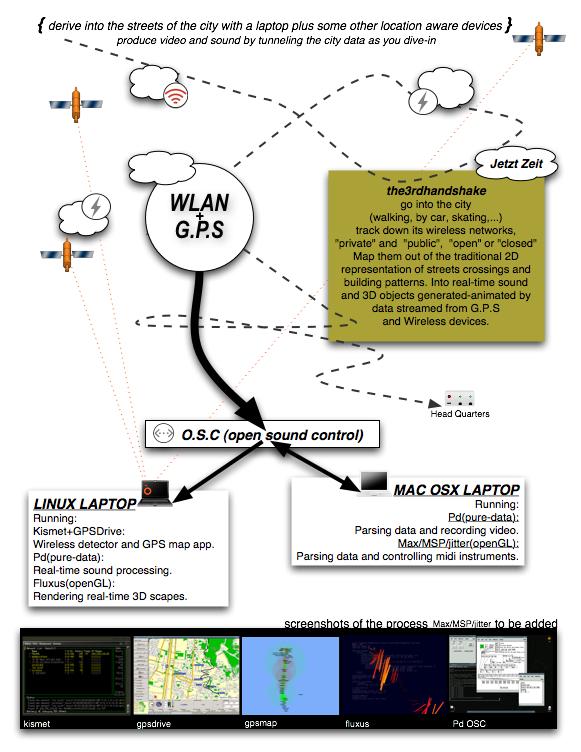Jetzt Schemata: Go into the city (walking, by car, skating,...) track down its wireless networks, "private" and "public", "open" or "closed" Map them out from the traditional 2D representation of street-crossings and building patterns. Map them into real-time sound and 3D objects generated-animated by the data streamed out from G.P.S, Wireless and other location aware devices. |

| Our project "Jetzt Schemata" is based on some code that we are developing using the OSC open sound control communication protocol to interface wireless, sound and visual(openGL) applications such as: Kismet, GPSDrive, PureData, Fluxus, MaxMSP and all other that can open a port for receiving or sending data via OpenSoundControl aka OSC. |

LINK TO A DOWNLOADABLE VERSION OF KISMET2OSC: |
| project by: lorenz schori (switzerland) I'm continuously developing ways to join my two main interests music and computer programming, exploring new possibilities off the beaten path. i'm looking forward to my studies at the jazz school berne, where i will refine my skills in both of those worlds. alejo duque (kolumbien) |